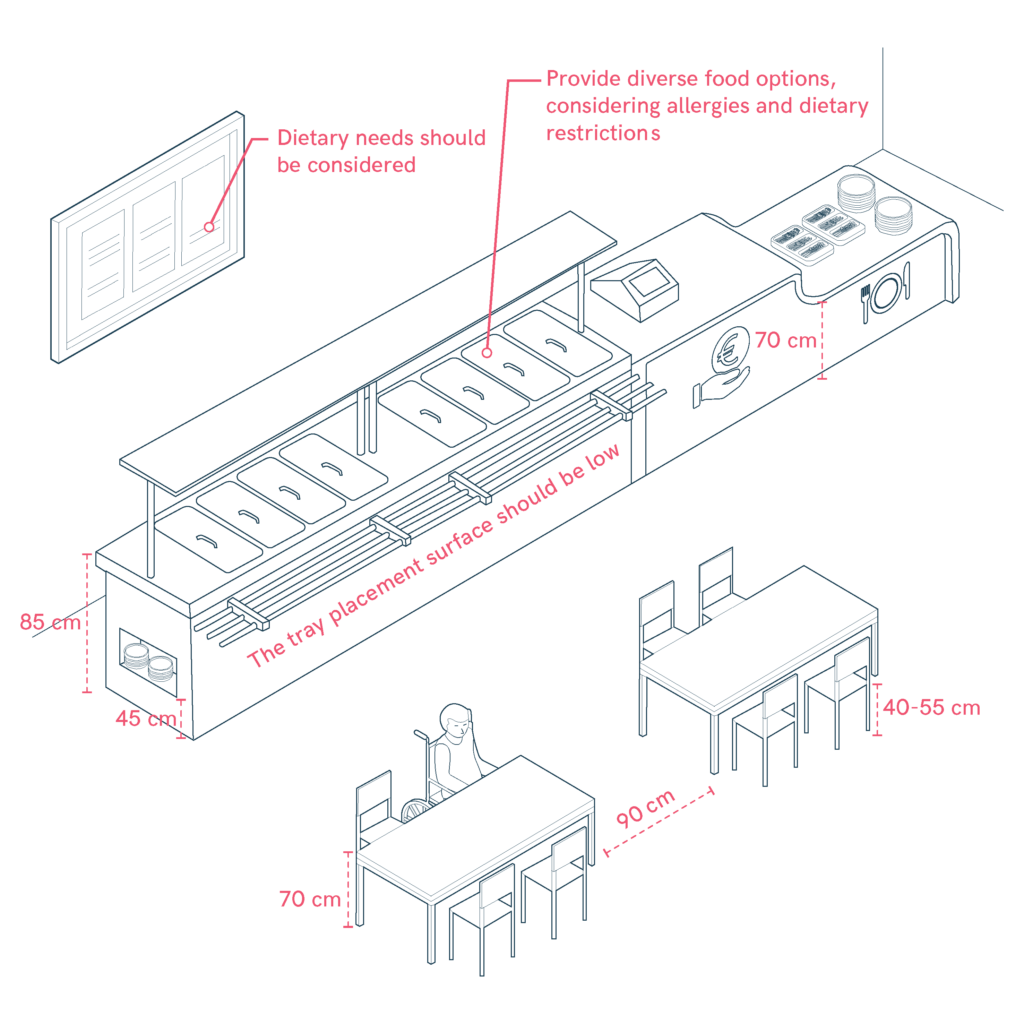Accessible Lunch Counters and Tables
Designing dining areas with different needs in mind ensures a better experience for all students. An accessible dining area is crucial to ensuring everyone can enjoy their meal comfortably and safely. A lower counter height and a designated tray area make it easier for people with different abilities to access their food. Catering for dietary needs, such as allergies, intolerances, or religious restrictions, ensures all students have suitable meal options.

- Physical Accessibility
– Limit counter height to 85 cm for better accessibility. – The food collection counter should not exceed 85 cm in height. – The tray placement surface should be low to prevent strain and accidents. – The lower shelf of the bar should be 45 cm high. – Ensure sufficient space between tables for wheelchair access. - Dietary Diversity, Inclusion and Restrictions
– Provide diverse food options, considering allergies and dietary restrictions. – Dietary needs such as dysphagia, intolerances, allergies, diabetes, vegetarianism, and veganism should be considered. – Offer menus with different alternatives for users with allergies, food restrictions, or cultural diets – Poverty and access to school meals in some areas are a significant problem. Local governments must be able to ensure nutrient-dense and healthy menus.
Sources
- https://accessible-eu-centre.ec.europa.eu/content-corner/digital-library/en-172102021-accessibility-and-usability-built-environment-functional-requirements_en
- https://www.miteco.gob.es/fr/ceneam/recursos/materiales/guia-diseno-entornos-escolares.html
- https://www.codigotecnico.org/pdf/Documentos/SUA/DccSUA.pdf
- https://www.cocemfe.es/wp-content/uploads/2020/02/Guia-basica-accesibilidad-centros-educativos.pdf
- https://www.oficinadeaccesibilidaduniversal.es/doc/educativa/centros-educativos/Accesibilidad%20cognitiva%20en%20centros%20educativos.pdf
- https://afaunamuno.org/wp-content/uploads/2023/02/Criterios-Intervencion-EE-30Mar_22.pdf
